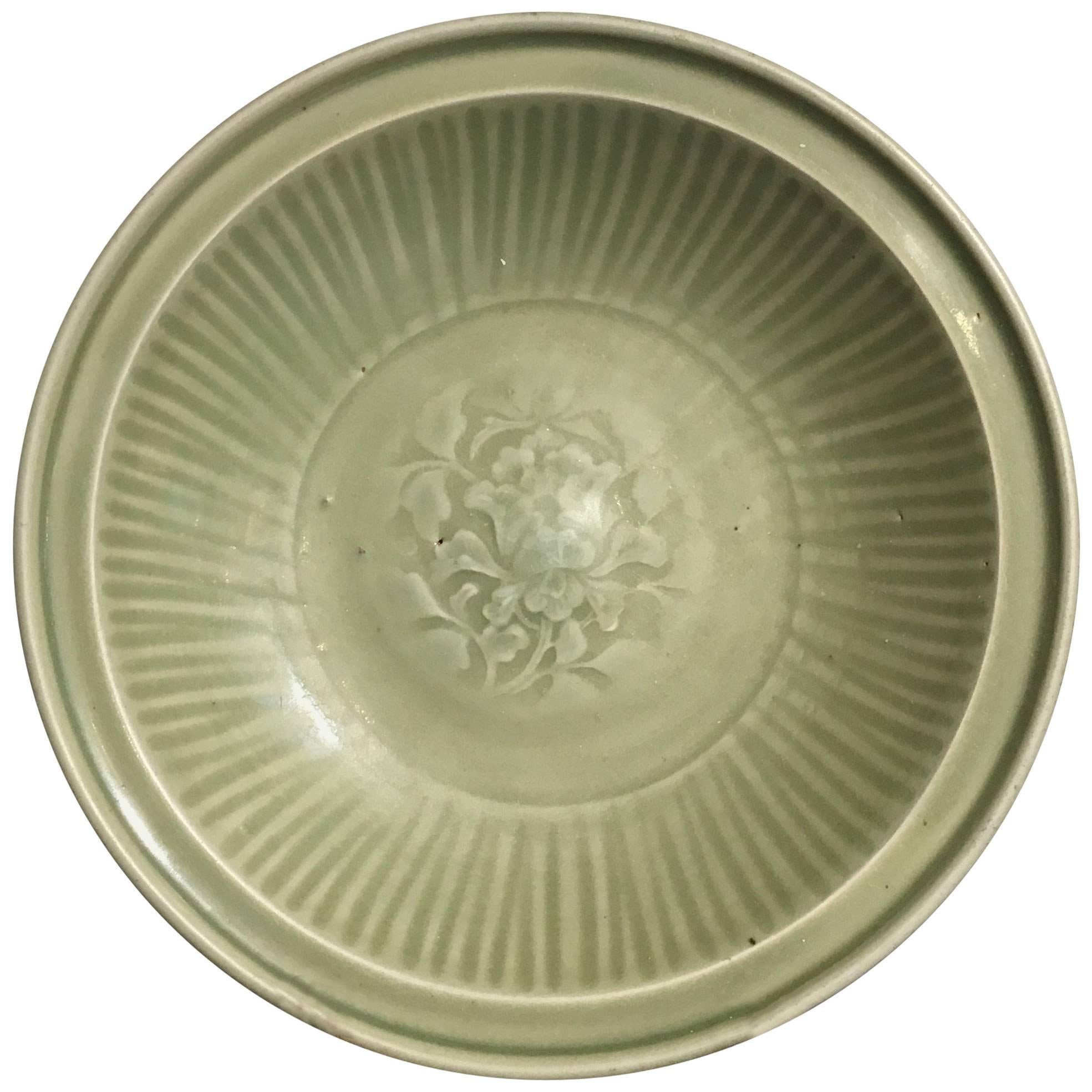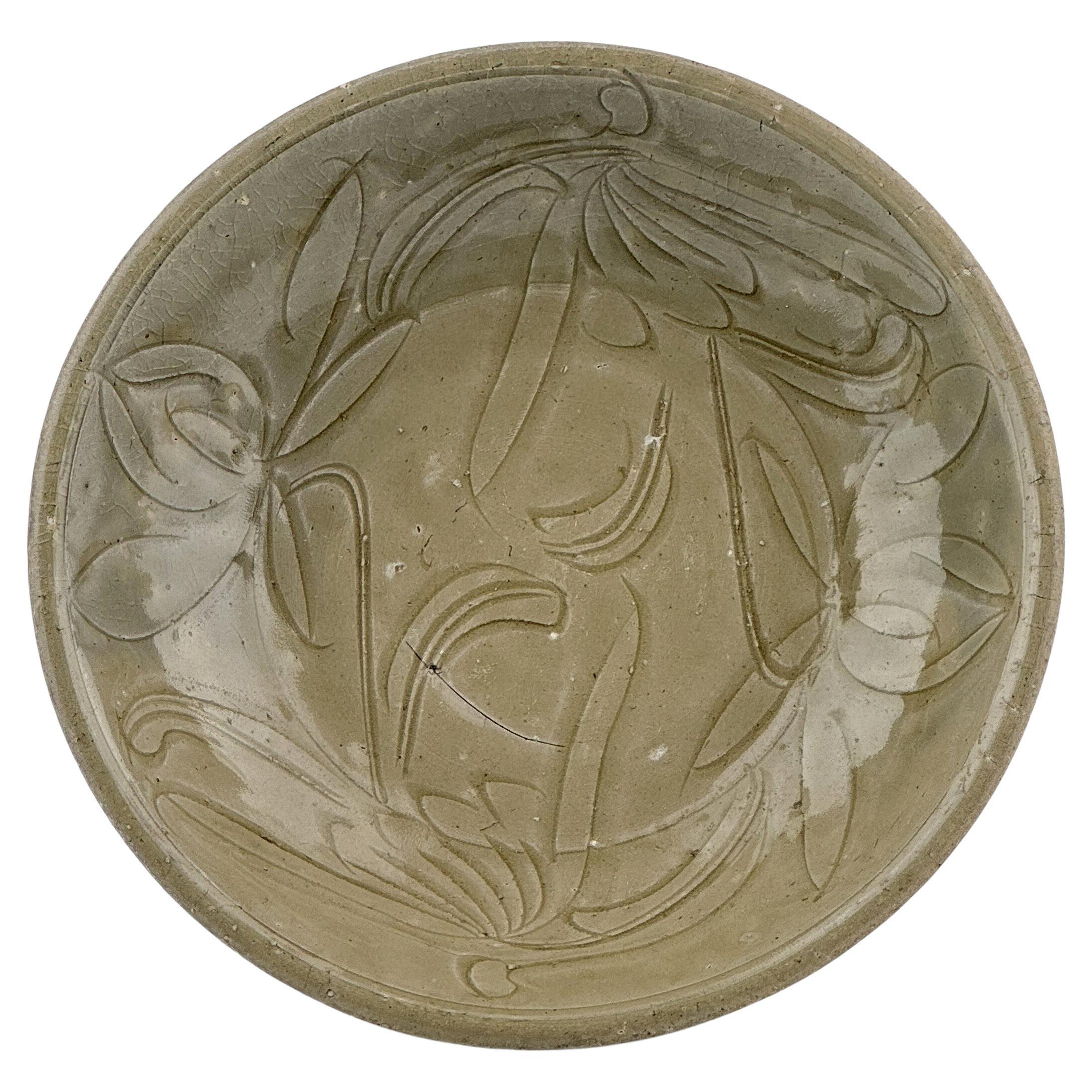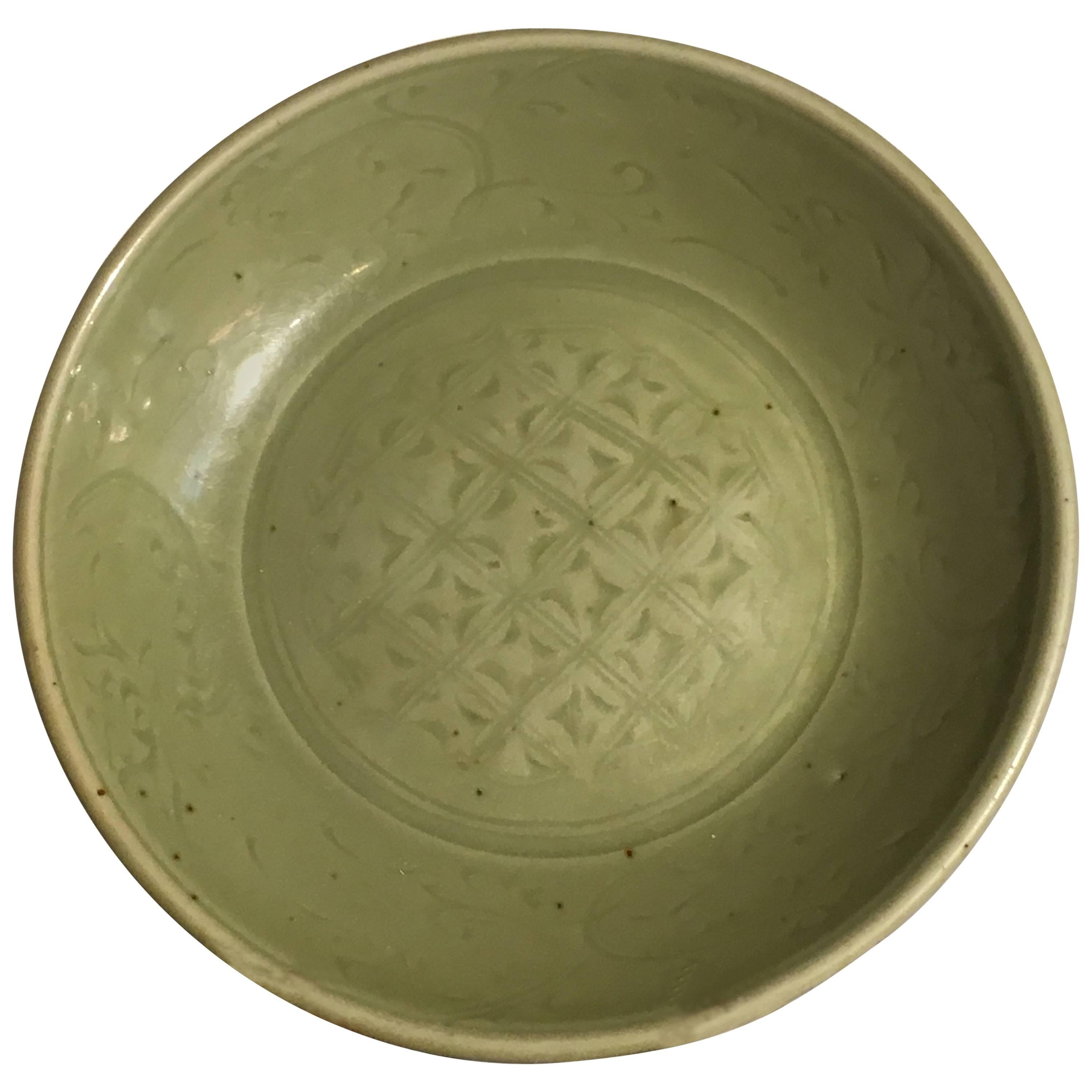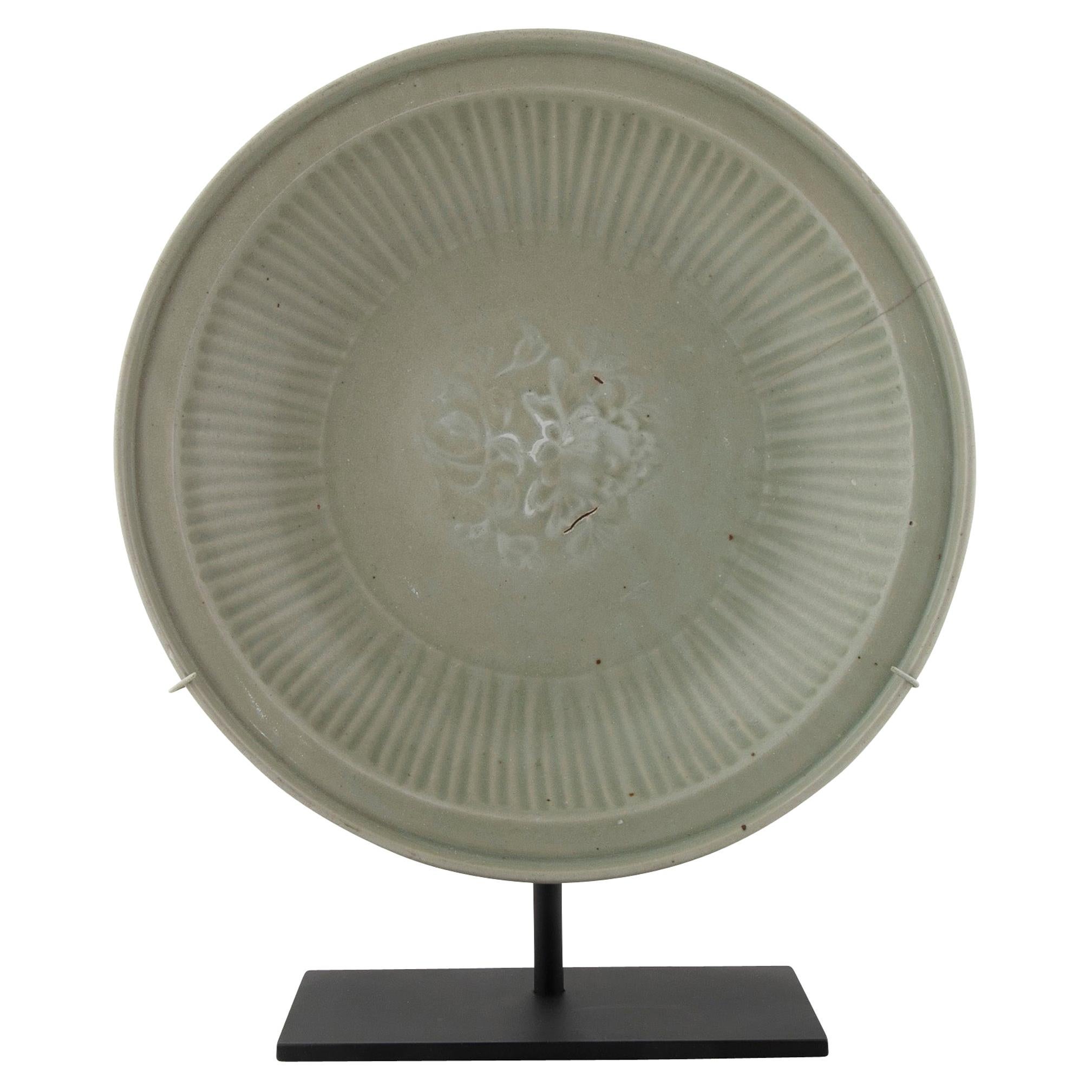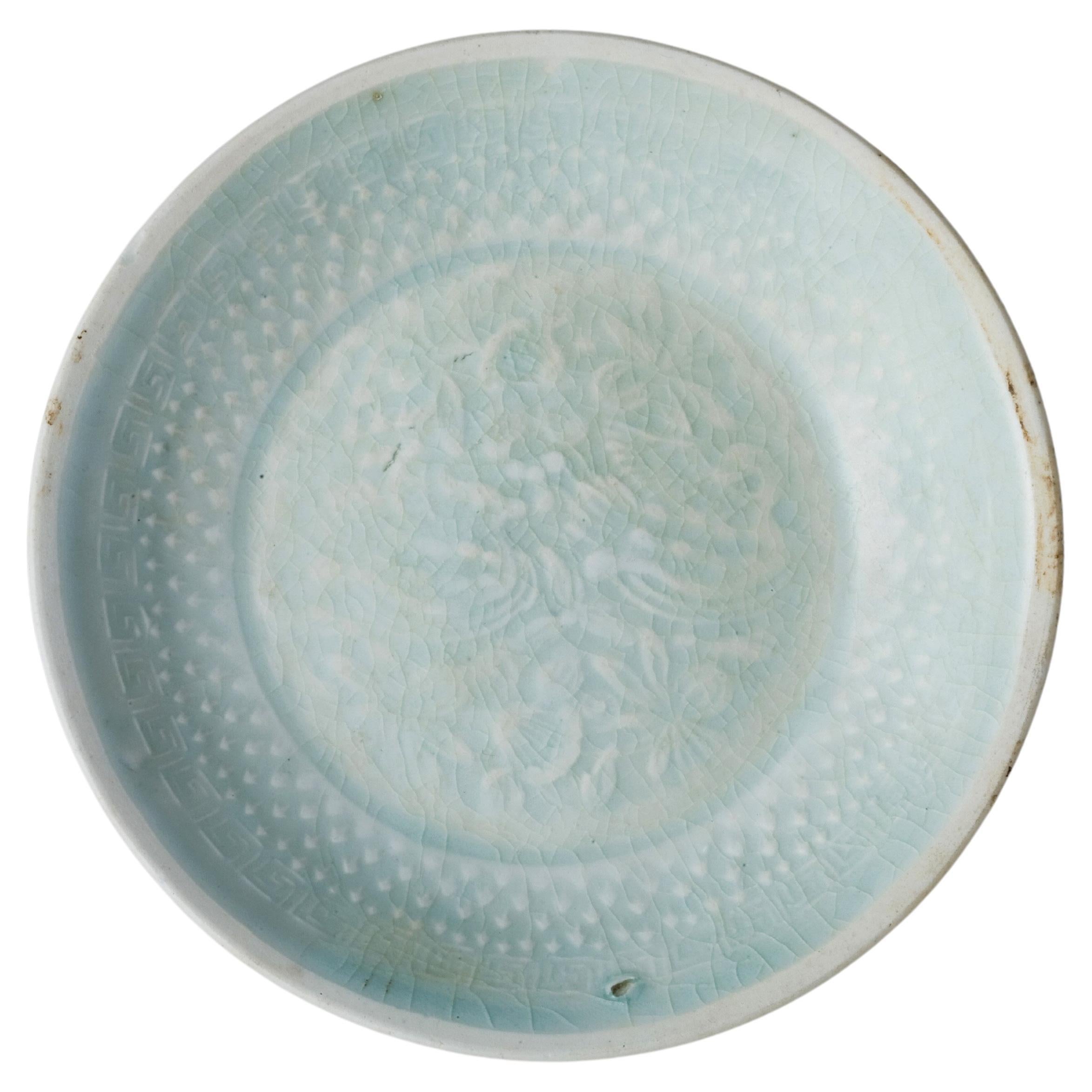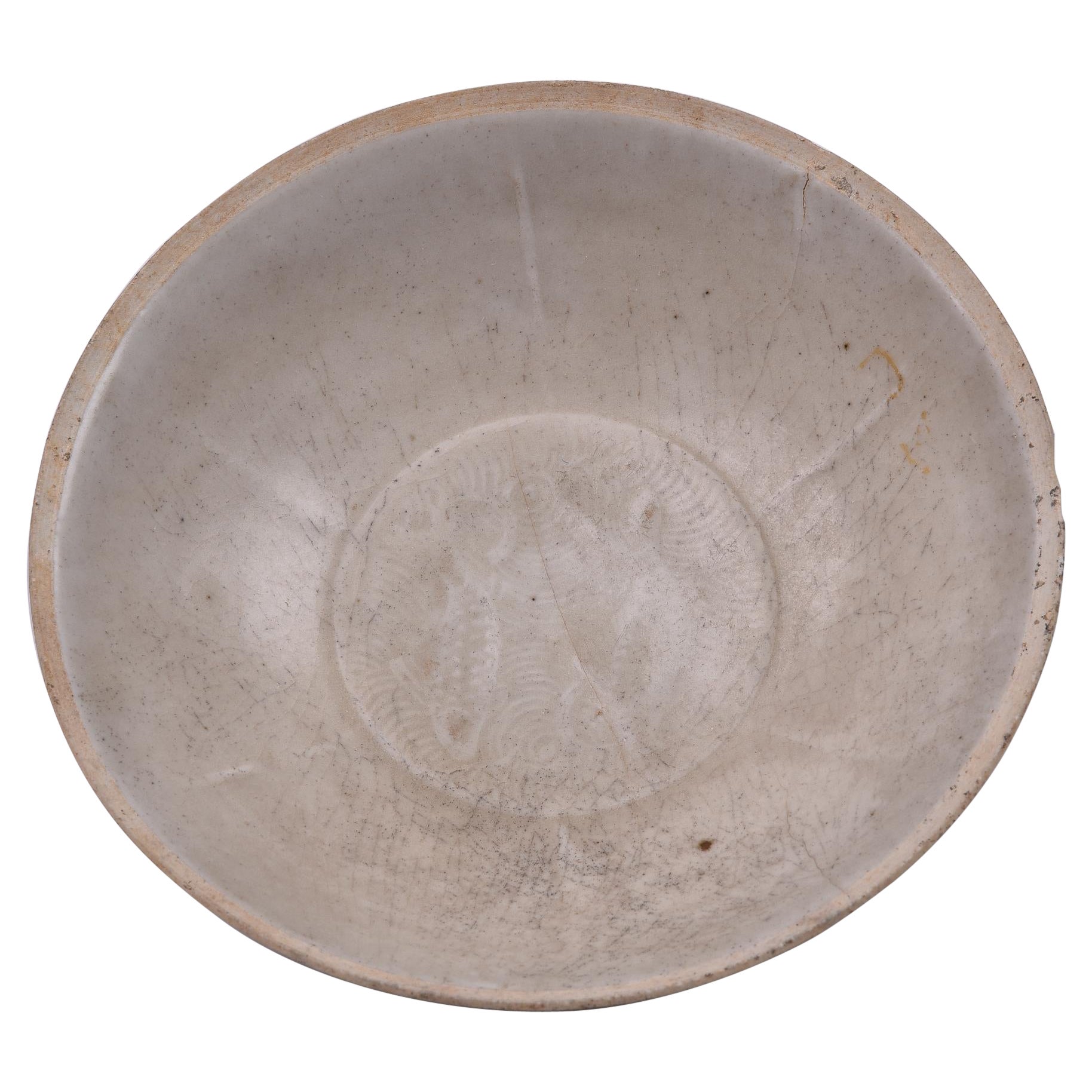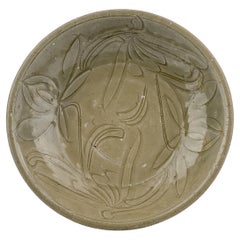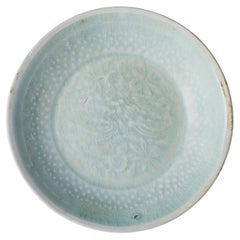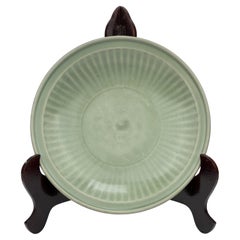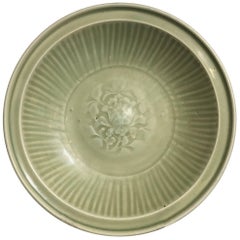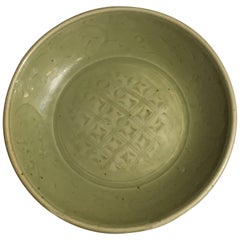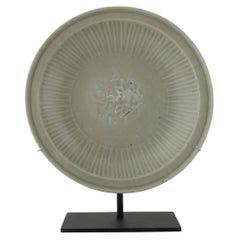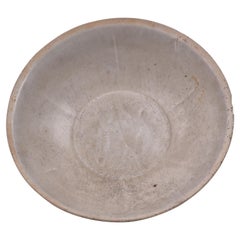Items Similar to Small Celadon Chrysanthemum Dish, Northern Song Dynasty(AD 960~1127)
Want more images or videos?
Request additional images or videos from the seller
1 of 14
Small Celadon Chrysanthemum Dish, Northern Song Dynasty(AD 960~1127)
$3,185
$4,90035% Off
£2,416.70
£3,718.0135% Off
€2,763.29
€4,251.2135% Off
CA$4,448.58
CA$6,843.9735% Off
A$4,946.22
A$7,609.5635% Off
CHF 2,582.64
CHF 3,973.3035% Off
MX$60,207.51
MX$92,626.9335% Off
NOK 32,953.38
NOK 50,697.5135% Off
SEK 30,875.75
SEK 47,501.1535% Off
DKK 20,622.91
DKK 31,727.5535% Off
Shipping
Retrieving quote...The 1stDibs Promise:
Authenticity Guarantee,
Money-Back Guarantee,
24-Hour Cancellation
About the Item
Potted with the fluted sides rising from a recessed base, carved to the interior with Chrysanthemum, covered overall with a grayish-green glaze, save for a ring to the underside left unglazed to reveal the gray stoneware body
Period : Jin Dynasty-Northern Song Dynasty
Type : Celadon
Medium : Yaozhou
Provenance : Acquired in late 1990s from Hongkong
Reference :
1) Sotheby's New York 18 March 2017 - Saturday At Sotheby’s: Asian Art - Lot 1363
(Price realised : 8,125 USD / Type : related)
2) Christies HONG KONG 5 APR 2016 - The Pavilion Sale - Chinese Ceramics and Works of Art - lot 65
(Price realised : HKD 75,000 / Type : related)
3) Art Institute Chicago - Reference Number 2013.225 - Dish with Inverted Petal-Lobed Rim
(Type : related)
* Yaozhou Celadon
The Yaozhou kilns, active during the Northern Song Dynasty (960–1127 AD), were located in modern-day Shaanxi Province and are renowned for their celadon wares. Yaozhou ceramics are distinguished by their olive or brownish-green glaze and the elegant, often spontaneous carving techniques employed in their decoration.
Yaozhou ware typically features carved or incised designs, sometimes with motifs that are impressively detailed. Common themes include floral patterns, such as peonies or chrysanthemums, and more abstract or geometric patterns. The carving is usually done in a 'sgraffito' technique, where the design is carved into the clay and then filled with the glaze, which after firing, reveals the pattern in a contrasting color against the darker body.
The forms of Yaozhou ceramics are often practical – including bowls, dishes, and jars – reflecting their use in daily life as well as for special occasions. The quality of the glaze, which ranges from a matte finish to a more glossy appearance, and the depth of the carving are particular characteristics that help identify Yaozhou wares. The aesthetic appeal of these ceramics lies in the harmony between form, decoration, and glaze, demonstrating the potters' skilled control over their craft.
During the Northern Song period, Yaozhou wares were highly valued and widely used, and they continued to influence Chinese ceramics in subsequent dynasties. Today, they are considered important artifacts and are highly prized by collectors and historians for their beauty and historical value.
About the Seller
4.8
Gold Seller
Premium sellers maintaining a 4.3+ rating and 24-hour response times
Established in 1999
1stDibs seller since 2023
38 sales on 1stDibs
Typical response time: <1 hour
- ShippingRetrieving quote...Shipping from: seoul, Korea South
- Return Policy
Authenticity Guarantee
In the unlikely event there’s an issue with an item’s authenticity, contact us within 1 year for a full refund. DetailsMoney-Back Guarantee
If your item is not as described, is damaged in transit, or does not arrive, contact us within 7 days for a full refund. Details24-Hour Cancellation
You have a 24-hour grace period in which to reconsider your purchase, with no questions asked.Vetted Professional Sellers
Our world-class sellers must adhere to strict standards for service and quality, maintaining the integrity of our listings.Price-Match Guarantee
If you find that a seller listed the same item for a lower price elsewhere, we’ll match it.Trusted Global Delivery
Our best-in-class carrier network provides specialized shipping options worldwide, including custom delivery.More From This Seller
View AllCeladon Bowl with Incised Lotus Patterns, Song Dynasty
Located in seoul, KR
Beneath the soft grayish-green glaze, incised lotus design emerges. The surface is adorned with flowing lines depicting lotus flowers and leaves, rendered in a refined carving techni...
Category
Antique 15th Century and Earlier East Asian Antiquities
Materials
Celadon
$1,050 Sale Price
30% Off
A Molded Qingbai 'Flowers' Dish, Southern Song Dynasty
Located in seoul, KR
The plate depicted here exhibits the intricate floral patterns and lotus motifs that are typical of Southern Song designs. The central floral motif captures the essence of Oriental b...
Category
Antique 15th Century and Earlier Hong Kong Antiquities
Materials
Ceramic
$1,560 Sale Price
60% Off
Qingbai Floriform Dish, Song-Yuan Dynasty
Located in seoul, KR
The dish has a scalloped rim, which gives it a flower-like appearance. The wavy edges are characteristic of the Song dynasty ceramics, often inspired by natural forms such as flowers...
Category
Antique 15th Century and Earlier Hong Kong Antiquities
Materials
Ceramic
$2,686 Sale Price
55% Off
A Large 'Longquan' Celadon Dish, Ming Dynasty, 15th century
Located in seoul, KR
The heavily potted dish is molded in the central roundel below the fluted cavetto and the everted rim with lipped edge, and is covered overall with a glaze of sea-green color, except for the unglazed ring on the base. The wood stand is not included with the item.
Period: Ming Dynasty (1368~1644)
Region: Longquan, China
Medium: Celadon
Type: Dish
Provenance : Acquired in late 1990s from Hongkong
Reference :
1) Christies NEW YORK 22–23 MAR 2018 - Fine Chinese Ceramics and Works of Art - Lot 722
2) Sotheby's Paris 11 December 2020 - Arts d'Asie - Lot 8
(Price realised : 4,032 EUR / Type : Closely related)
3) Christies LONDON 21–28 MAY 2020 - The Art of China - Lot 31
(Price realised : 5,250 GBP / Type : Closely related)
* Ming Dynasty Longquan Celadon
Longquan celadon from the Ming Dynasty typically exhibits a more robust and heavier stoneware body compared to its Song Dynasty predecessors. The Ming era saw an evolution in celadon glaze, achieving a wider spectrum of green hues, from olive to bluish-greens. Ming celadons...
Category
Antique 15th Century and Earlier Hong Kong Ming Decorative Dishes and Vi...
Materials
Celadon
$3,594 Sale Price
40% Off
Lotus Petal 'Longquan' Celadon Bowl, Ming dynasty
Located in seoul, KR
The bowl features a relatively deep green glaze and a smooth and lustrous finish. The exterior is intricately incised with a lotus petal design, symbolizing purity and spiritual enlightenment, while the interior remains plain to emphasize the glaze's elegance. Over centuries, a natural brown discoloration has appeared on the exterior, reflecting its historical authenticity and prolonged chemical reaction during burial. This is also considered a part of the aesthetic element of celadon.
Period: Ming Dynasty (1368~1644)
Region: Longquan, China
Medium: Stoneware - Celadon glazed
Type: Tripod censer
Size : 18.5 cm(Diameter) , 7.5cm(Height)
Provenance : Acquired in late 1990s from Hongkong
* Ming Dynasty Longquan Celadon
Longquan celadon from the Ming Dynasty typically exhibits a more robust and heavier stoneware body compared to its Song Dynasty predecessors. The Ming era saw an evolution in celadon glaze, achieving a wider spectrum of green hues, from olive to bluish-greens. Ming celadons...
Category
Antique 15th Century and Earlier Hong Kong Ming Antiquities
Materials
Celadon
$4,194 Sale Price
40% Off
Lotus Pattern Dish From Ca Mau Ship Circa 1725, Qing Dynasty, Yongzheng Reign
Located in seoul, KR
This lotus dish from Ca Mau Ship was held in our gallery in three pieces(according to sizes). One was sold in 2024.
With radiating lotus-petal 8 panels painted with single flowers a...
Category
Antique Early 18th Century Vietnamese Qing Ceramics
Materials
Ceramic
$1,400 Sale Price
30% Off
You May Also Like
Chinese Ming Dynasty Longquan Celadon Peony Deep Dish, 14th-15th Century
Located in Austin, TX
A beautiful Chinese celadon glazed deep dish with an impressed peony design to the center, Ming Dynasty, circa 1400, Longquan kilns, China.
The lovey dish covered in an attractive ...
Category
Antique 15th Century and Earlier Chinese Ming Ceramics
Materials
Porcelain
Ming Dynasty Longquan Celadon Dish with Geometric Design, 15th Century
Located in Austin, TX
A heavily potted and richly glazed celadon dish, Longquan kilns, early Ming Dynasty, mid 15th century, China.
The large dish glazed in a deep olive cela...
Category
Antique 15th Century and Earlier Chinese Ming Ceramics
Materials
Ceramic
Large Chinese Celadon Shallow Bowl with Central Incised Peony Element
Located in Stamford, CT
Large Chinese celadon shallow bowl with central incised peony element, early 20th century.
Category
Antique 19th Century Chinese Archaistic Ceramics
Materials
Ceramic
Antique Chinese Celadon Little Plate
Located in Alessandria, Piemonte
Little plate from my collection, now on sale after 35 yeas and never exibited to the public.
Simply elegant for any useon any elegant table. See all the others published under my na...
Category
Antique 15th Century and Earlier Chinese Other Ceramics
Materials
Porcelain
Ming Dynasty Longquan Celadon Glazed Charger
Located in Stamford, CT
Longquan celadon glazed charger having fluted rim with well centre and incised stylized decoration. Ming dynasty. Underside with burnt orange firing m...
Category
Antique 16th Century Chinese Ming Ceramics
Materials
Ceramic
Ming Dynasty Celadon Glazed Charger
Located in Stamford, CT
Ming dynasty celadon glazed charger having fluted interior with plain well center.
Category
Antique Mid-17th Century Chinese Ming Ceramics
Materials
Ceramic
More Ways To Browse
Antique Chrysanthemum
Small Antique Dish
Song Dynasty
Chinese Song Dynasty
Song Dynasty Furniture
New Art Wares
Chrysanthemum Pattern
Ring Dish
Song Dynasty Ceramics
Chinese Ceramics Song Dynasty
Ming Dynasty Glazed
Antique Covered Dish
Green Ming Dynasty
Jared Used Rings
Chinese Stoneware Jar
Antique Ring Dish
Ming Dynasty Dish
Saturday Sale
